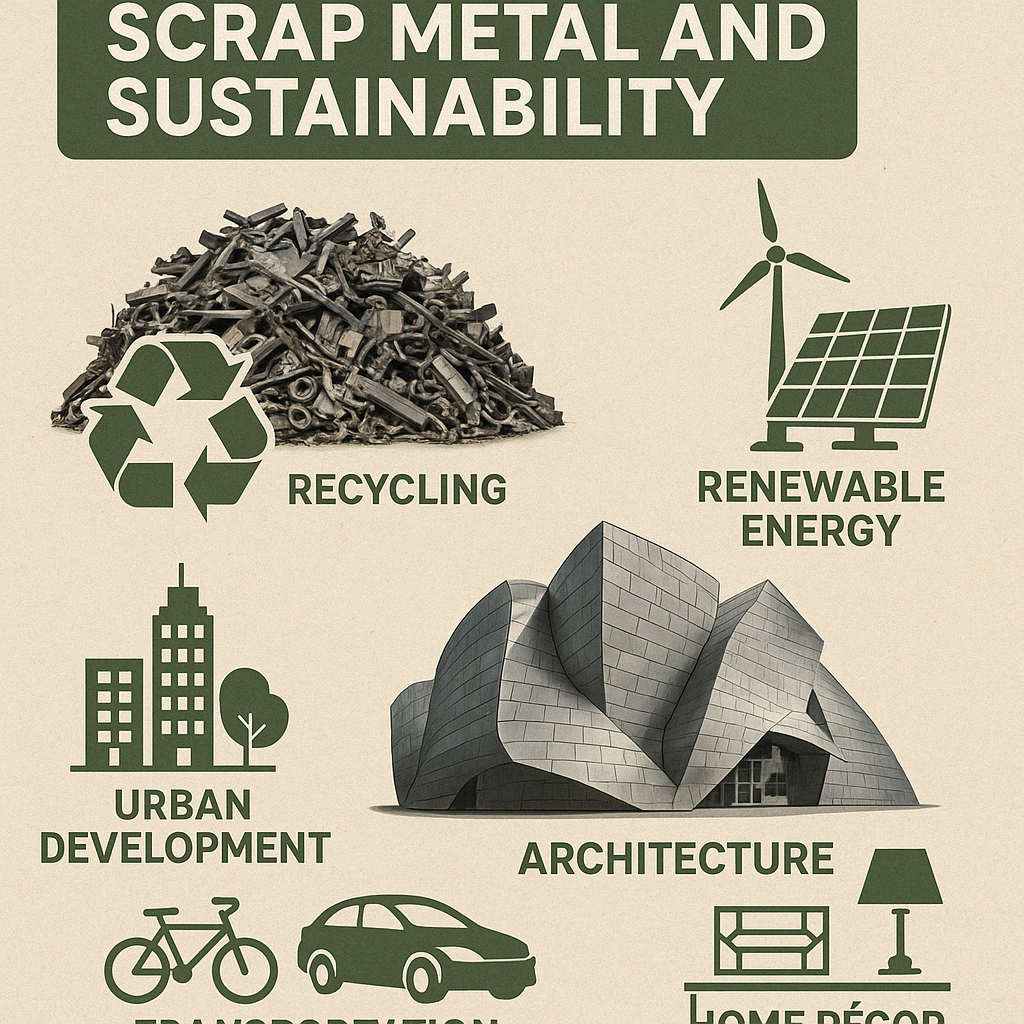Scrap metal has emerged as a cornerstone in pursuing sustainable living, contributing significantly to environmental conservation and resource management. Recycling processes transform aged, defunct metal into valuable resources, supporting various facets of sustainability. By reducing the need for virgin materials, recycling limits the depletion of non-renewable resources, maintaining a balance within ecosystems. According to the Institute of Scrap Recycling Industries, recycling metals significantly reduces energy consumption, with metals such as aluminum saving up to 95% of energy compared to new production. This efficiency translates to considerable reductions in carbon emissions, which is pivotal for climate change mitigation. Recycled metals are reintegrated into various industries, creating a self-sustaining loop that ensures resources continuously cycle through our economic systems without ending as waste.
Transforming Urban Landscapes with Recycled Materials
The adoption of recycled metals in urban development is steadily revolutionizing metropolitan landscapes. Cities are integrating these materials into infrastructure projects, from constructing durable bridges to creating aesthetically pleasing park installations. These developments cut costs by minimizing the need for new material production and promoting environmental stewardship. Initiatives like refrigerator recycling Sussex County NJ highlight how local practices can bring broader ecological benefits. In practical terms, using recycled metals in urban design fosters the development of durable and resilient public works. Including such resources forms part of a larger vision of sustainable urban planning, where cities prioritize green practices. This emphasis on recycling also reflects a shift in societal values, placing greater importance on longevity and eco-efficiency in urban settings.
The Role of Scrap Metal in Renewable Energy Solutions
In the renewable energy domain, scrap metal plays a crucial role by serving as a key material for eco-friendly technology. Metals used to construct wind turbines and solar panels demonstrate the durability and recyclability necessary for sustainable energy applications. As highlighted by Renewable Energy World, leveraging recycled materials in the renewable sector reduces costs and complements global efforts towards greener energy solutions. The incorporation of scrap metal into these technologies has dual benefits. On the one hand, it reduces the carbon footprint associated with energy production. On the other, it serves as a stepping stone for more widespread adoption of renewable energy technologies. Investing in recycling processes for these materials can spur innovation and accelerate the transition to a more sustainable energy future.
Innovative Architectural Designs Using Scrap Metal
Scrap metal is significantly influencing the field of architecture, providing architects with the opportunity to experiment and innovate with sustainable materials. By incorporating salvaged metal into design plans, architects can create structures that boast aesthetic appeal and ecological responsibility. Metal’s durability and versatility make it an attractive choice for contemporary architects seeking to fuse sustainability with modern design. Structures made from such materials are less resource-intensive and offer enhanced resilience against environmental factors. This trend is gaining popularity in green architecture, encouraging a design philosophy centered on reducing environmental impact.
Eco-friendly Transportation: Cars and Bikes from Scrap
The transportation industry is transforming with the adoption of recycled metals. Automakers are incorporating these materials into vehicle production, improving the sustainability profile of cars and trucks by reducing reliance on new metals. This shift enhances vehicle fuel efficiency due to reduced weight, directly correlating to lower emissions. Bicycles, too, are experiencing an evolution with designs that use salvaged metal for lightweight and robust components. Such innovations aim to meet the demands of eco-conscious consumers, promoting cycling as a viable and sustainable mode of transport. By prioritizing recycled materials, the transportation sector can substantially decrease its environmental footprint, paving the way for greener transit solutions.
Crafting Home Décor with Salvaged Metal
Beyond its industrial applications, scrap metal is finding its way into home décor, infusing spaces with a rustic and innovative character. Designers and enthusiasts are exploring the creative potential of using salvaged metal to craft distinctive and sustainable interior elements. Introducing recycled metal into home décor from furniture to artwork encourages environmentally friendly consumption habits. It provides an avenue for reducing waste while enhancing the uniqueness and artistic quality of living spaces. As consumers increasingly prioritize sustainability, the demand for such eco-themed home décor is poised to rise, supporting a mindful, resource-efficient design culture.
The Future of Scrap Metal in Circular Economy Initiatives
As global economies transition towards circular models, the role of scrap metal becomes even more pronounced. This framework minimizes waste, and resources are effectively cycled back into the economy, reducing environmental pressures. The Ellen MacArthur Foundation emphasizes the importance of recycling processes in facilitating these initiatives, advocating for closed-loop systems that sustain ecological balance. The future of scrap metal is promising, particularly in fostering new business models and encouraging responsible consumption. Industries can significantly lower their carbon footprints by integrating recycled metals more broadly into production processes and contribute to a more sustainable global economy. As we continue to innovate and adapt, scrap metal will play a pivotal role in shaping a sustainable, resource-efficient world.

